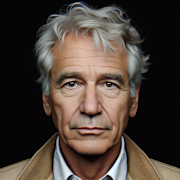Beyond the Tinsel Town: Classic Cinema's Impact on Global Culture

In the glamorous world of cinema, where new releases and celebrity gossip dominate headlines, it’s all too easy to forget the profound impact that classic cinema has had on global culture. From iconic films that shaped storytelling techniques to timeless masterpieces that continue to captivate audiences worldwide, classic cinema has left an indelible mark. In this blog post, we will explore the lasting influence of classic cinema and how it has shaped our society and culture.
1. A Timeless Art Form
Classic cinema stands as a testament to the timeless nature of art and storytelling. While modern films tend to heavily rely on special effects and CGI, classic cinema relied on the power of storytelling, captivating performances, and innovative cinematography. These films were often made on limited budgets, yet they managed to create narratives that continue to engage audiences decades later.
Directors like Alfred Hitchcock, Charlie Chaplin, and Orson Welles crafted stories that stood the test of time and allowed viewers to immerse themselves in the magic of cinema. By focusing on character development and compelling narratives, these films tapped into universal themes and emotions that resonate with audiences across cultures and generations.
2. Pioneering Techniques That Shaped the Industry
Classic cinema played a pivotal role in pioneering techniques and technologies that shaped the film industry as we know it today. From the birth of cinema during the silent era to groundbreaking advancements in sound design and visual effects, classic films pushed the boundaries of what was possible at the time.
In the 1920s, German expressionist films like “The Cabinet of Dr. Caligari” and “Metropolis” showcased surreal sets and distorted visuals, influencing countless filmmakers and giving birth to the genre of film noir. These films demonstrated the power of visual storytelling and created a lasting impact on cinematography.
Similarly, the advent of sound in films revolutionized the industry and opened up new avenues for storytelling. Classic movies like “Gone With The Wind” and “The Wizard of Oz” not only entertained audiences but also proved the potential of sound in enhancing the cinematic experience. These technological advancements became the building blocks for future filmmakers to explore and innovate.
3. Cultural Reflection and Influence
Classic cinema serves as a reflection of the social, political, and cultural climate of its time. In many cases, these films acted as a mirror to society, highlighting prevalent issues and encouraging viewers to question the status quo. By tackling themes such as war, discrimination, and societal norms, classic films sparked conversations and brought important issues to the forefront.
For instance, films like “Casablanca” and “Gone With The Wind” depicted the impact of World War II on individuals and societies, offering audiences a glimpse into the realities of war. These movies not only captured the zeitgeist of their time but also allowed viewers to empathize with characters and gain a deeper understanding of historical events.
Furthermore, classic cinema has influenced various art forms and cultural movements. From fashion trends inspired by iconic film costumes to references in contemporary music and literature, classic films have permeated popular culture in ways that are impossible to ignore. The unforgettable characters, iconic dialogues, and powerful imagery continue to resonate with audiences and inspire new generations of artists.
4. Preserving Film History and Legacy
In an age where digital media dominates, classic cinema serves as a reminder of the importance of preserving film history. Many old films have been lost due to inadequate preservation efforts, highlighting the need for initiatives that protect and restore these cultural treasures. Film archives, museums, and film preservation societies play a crucial role in safeguarding classic cinema and making it accessible to future generations.
Moreover, the availability of classic films through modern platforms and streaming services has allowed audiences to rediscover and appreciate these cinematic gems. Whether it’s through film festivals, repertory theaters, or online streaming, classic cinema has found new avenues to reach and captivate contemporary audiences.
5. Inspiring Future Filmmakers
Classic cinema continues to influence and inspire filmmakers around the world. From directors like Martin Scorsese and Quentin Tarantino, who pay homage to classic films in their work, to new voices that draw from the storytelling techniques of the past, the impact of classic cinema can be seen in contemporary filmmaking.
By studying classic films, aspiring filmmakers can learn valuable lessons in storytelling, cinematography, and character development. The works of auteurs like Federico Fellini, Akira Kurosawa, and Ingmar Bergman serve as an endless source of inspiration, encouraging filmmakers to push boundaries and create meaningful narratives.
In conclusion, classic cinema has left an indelible imprint on global culture through its timeless storytelling, pioneering techniques, cultural reflection, and continued inspiration. As we celebrate contemporary cinema, let us not forget the powerful influence of classic films that continue to shape and enrich our world.

Desmond van der Walt
Journalist
More From Classics Authority Movies

Movie
Cinematic Transformations: Classic Actors Who Successfully Reinvented Themselves

Movie
The Enigma of Film Editing: Classic Movies and the Cutting Room Floor

Movie
Memento (2000)

Movie
M*A*S*H (1970)

Movie
The Unforgettable Elegance of Audrey Hepburn: A Timeless Icon

Movie
Breakfast At Tiffany's (1961)





